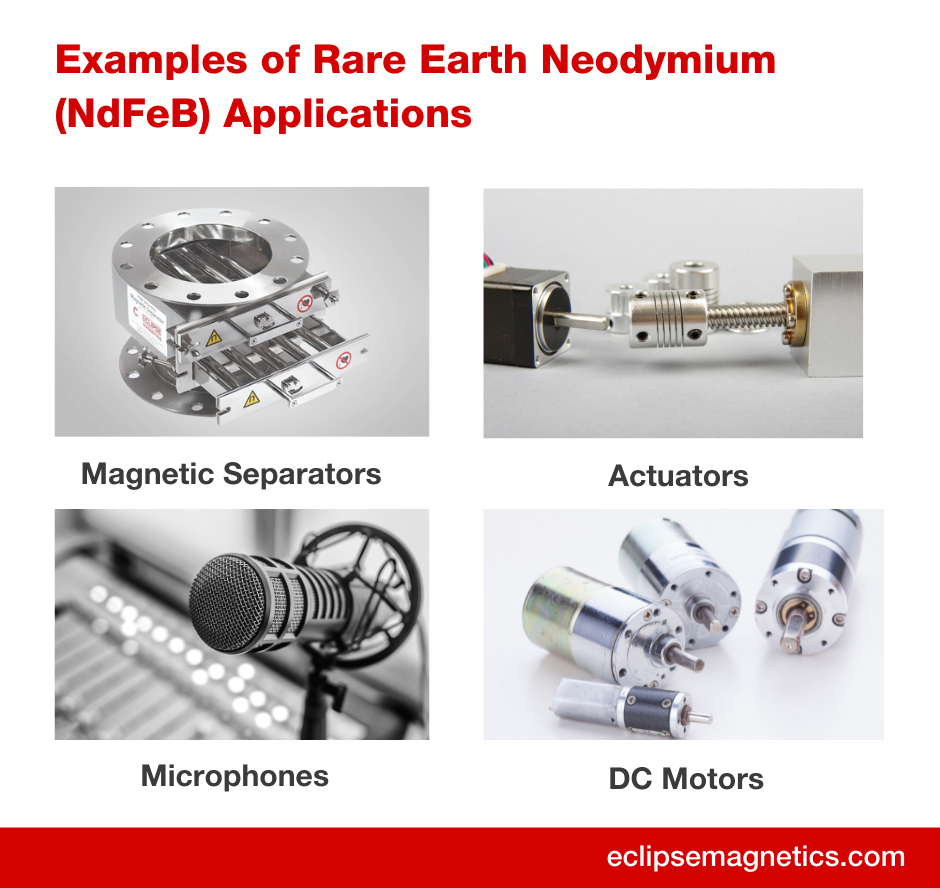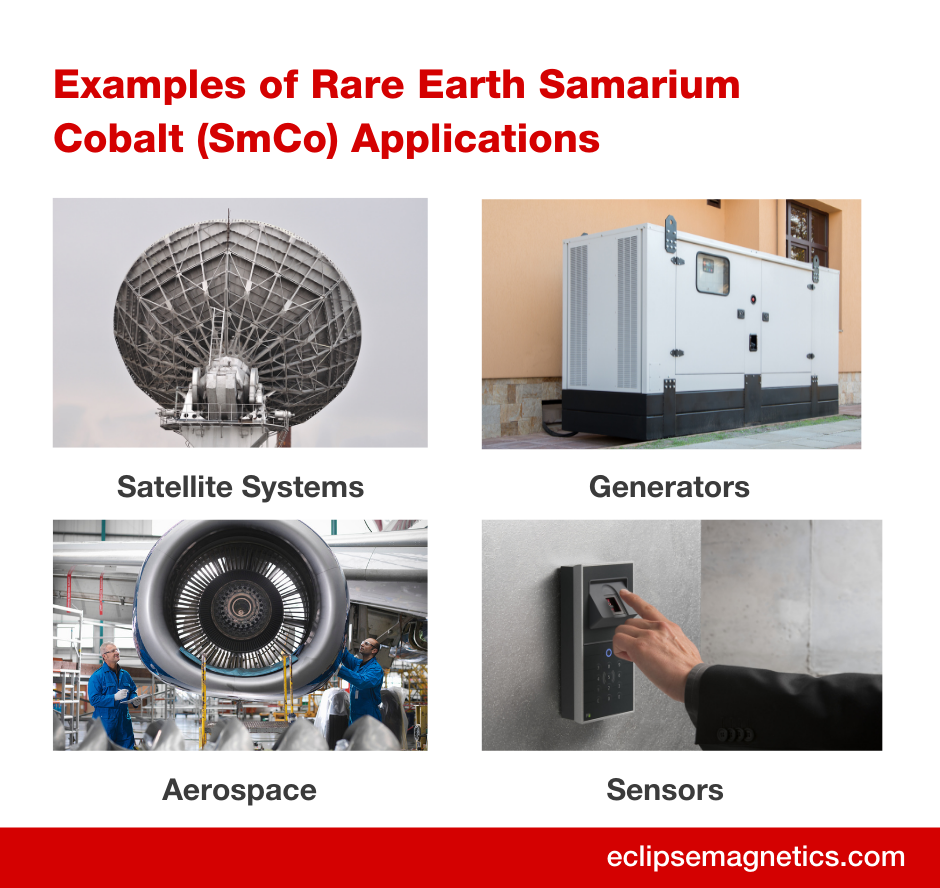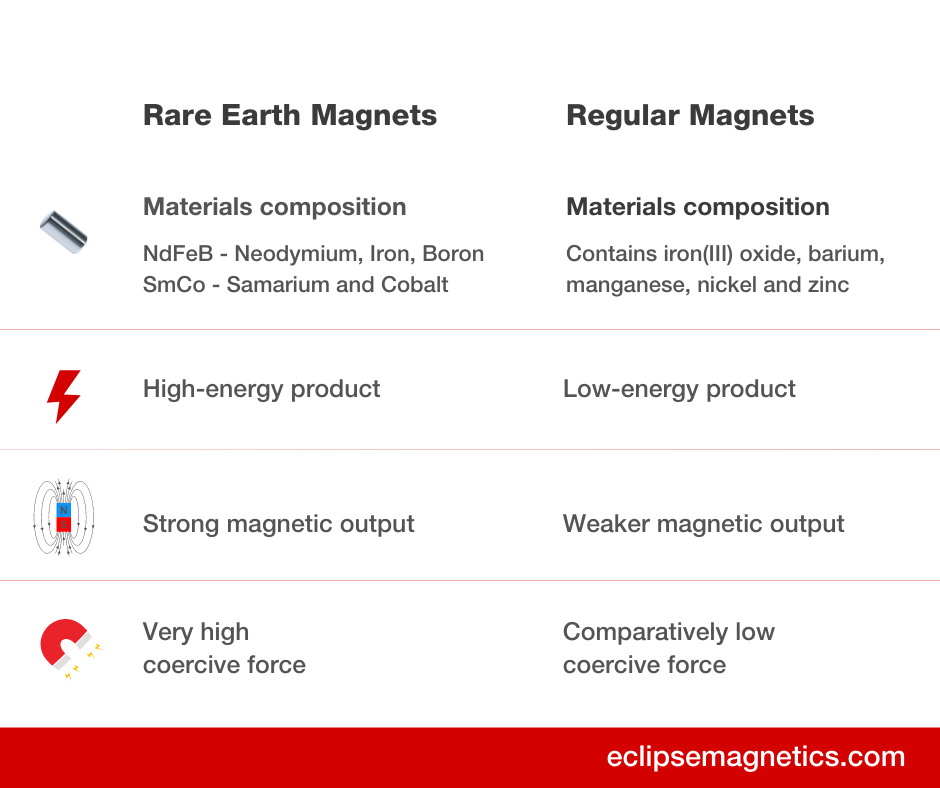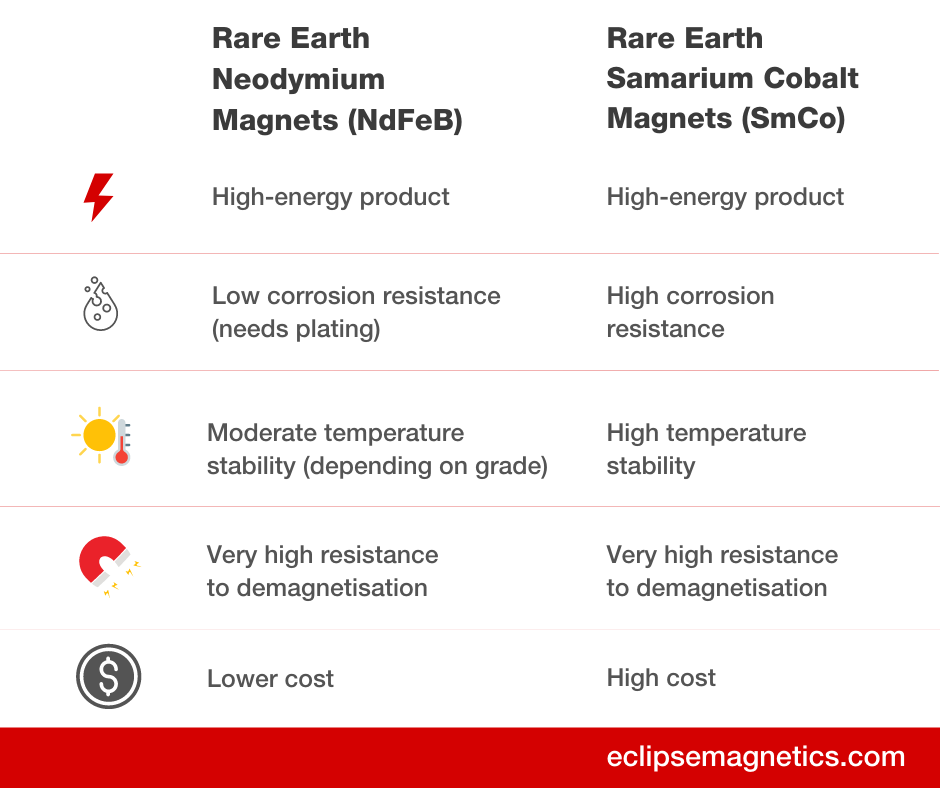What Makes Rare Earth Magnets Different from Regular Magnets
Magnets made of rare-earth elements are relatively recent inventions. Their origins date back to the late 1960s when US Air Force Materials Laboratory scientists discovered an alloy of Yttrium and Cobalt had very strong magnetic properties. Dr Masato Sagawa developed the first Neodymium magnets (NdFeB) in Japan, giving a very powerful performance and paving the way for a new era of magnetic technology. Rare-earth magnets quickly gained the attention of manufacturing companies, and soon they found their way into consumer and business products.
The performance and affordability of rare earth magnets make them critical components in many technological and industrial applications. Their excellent size to strength ratio makes them ideal for use where space or weight constraints exist.

What Is a Rare Earth Magnet?
In magnetic technology, rare-earth magnets are permanent magnets composed of alloys of rare-earth elements. A rare-earth magnet has a much higher performance than ceramic magnets and alnico magnets. Magnets of this type typically have a remanence exceeding 1.2 Tesla and are the strongest among permanent magnets.
There are two types of rare earth magnets, varying in grades (strengths) and having different magnetic and physical properties:
Neodymium Magnets (NdFeB)
Neodymium is the most affordable and strongest output rare earth magnet. The material was developed in the 1980s by combining neodymium, iron, and boron (abbreviated NIB). In the beginning, neodymium magnets were very costly to produce (and to buy). However, due to expanded mining operations and patent restrictions being loosened, this magnet type is now the most cost effective Rare Earth type available.
Applications of Rare Earth Neodymium
Microphones or Audio applications
DC motors (automotive starters)
Disk drives, printers, and speakers for computers
Devices for medical use

Samarium Cobalt Magnets (SmCo)
A Samarium Cobalt (SmCo) magnet also has strong magnetic properties. They are more prone to break or chip when dropped or snapped together. Therefore, they should be handled and packed carefully to prevent damage to the magnets.
Samarium Cobalt magnets are primarily made from an alloy of samarium, cobalt, and in some alloys, iron. This material is extremely stable at high temperatures and highly resistant to corrosion and demagnetisation. As a rare-earth magnet, SmCo magnets are perfect for applications that require extremely high temperatures, cryogenic temperatures, limited space, high magnetic strength, and thermal stability of magnetic output.
Applications of Rare Earth Samarium Cobalt
Tubes for travelling waves
Satellite systems and linear actuators
When temperature stability is crucial

Explore more related topics to Magnetism & Magnet Materials
A Quick Guide to Magnets, Magnetic Metals and Non-Magnetic Metals
Find the Right Magnet Materials: Alnico vs Neodymium Magnets
Neodymium Rare Earth Magnets vs Samarium Cobalt Rare Earth Magnets
Samarium Cobalt and Neodymium magnets have their own strengths, but Neodymium magnets have the advantage of being mainly constructed of neodymium, iron, and boron alloys. This magnet, however, tends to corrode and is brittle. In order to prevent corrosion, most manufacturers nickel plate their magnets.
As opposed to Samarium Cobalt ("SmCo"), Neodymium magnets are far less prone to cracking and chipping. However, they are sensitive to temperature changes. SmCo may be a better choice for applications requiring high levels of magnetic stability since its magnetic properties remain stable at high temperatures.
The following is a simple comparison of Rare Earth Neodymium Magnets versus Rare Earth Samarium Cobalt Magnets:
The Disadvantages of Rare-Earth Magnets
While rare-earth magnets possess some advantages, there are a few disadvantages, including rust and/or corrosion in NdFeB. In the presence of moisture, oxidation can occur, resulting in corrosion and other types of damage.
To prevent metal corrosion in rare-earth magnets, some manufacturers have begun additionally covering them with stainless steel protection. Metallic coatings do not interfere with a magnet's magnetic field, but they do help protect the magnet against corrosion.
Do Rare Earth Magnets Lose Their Magnetism?
Unlike most other types of magnets, rare earth magnets are highly resistant to demagnetisation. In the presence of other magnets or when dropped, their magnetization will not be affected in most applications.
Nevertheless, they will begin to lose strength if they are heated over their maximum operating temperature, which for standard N grades is 176°F (80°C). When heated above their Curie temperature, which is 590°F (310°C) for standard N grades, they lose all magnetization.
The magnets we manufacture are made of materials that can withstand higher temperatures without losing strength. We supply NdFeB with a variety of temperature ratings and with a variety of grades. We also offer a wide range of protective coatings for NdFeB magnets. We also supply a comprehensive range of SmCo grades and can provide coatings to those as well if required.
Difference Between Rare Earth Magnets and Regular Magnets
Magnets that are made of ceramic (or ferrite) are sometimes known as regular magnets and we use them for everyday purposes. Ferrite is the main component of these magnets. Ferrite is a ceramic material composed mainly of iron(III) oxide.
The primary difference between rare earth magnets and regular magnets is that rare earth magnets are permanent magnets made from rare earth alloys, whereas regular magnets are composed mainly of iron.
In terms of power, a rare earth magnet is about 2-7 times stronger than a standard magnet. A ferrite or ceramic magnet usually creates a weak magnetic field output, while a similarly sized rare earth magnet generates a magnetic field that is much stronger in output. Rare Earth magnets are also harder to demagnetise in most applications.
Here is a simple comparison between Rare Earth Magnets and Regular Magnets:

Get in Touch Today
You can rely on us to help you select the right magnet for your application as well as to supply assemblies and sub-assemblies to customer design drawings. If you would like to discuss your specific magnet needs with our team of experts, don't hesitate to contact us today.
We offer free consultations to understand your business requirements and will tailor a solution to meet those needs. Click here to learn more.


 UK
UK 